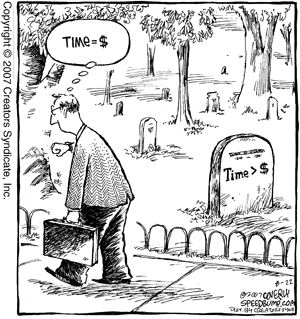Does anyone ever worry about their portfolio?
Let’s say an investor with a $3,000,000 portfolio has 40% in stocks, which is the recommended allocation from many financial advisors for retirement. I often hear take the number 100 subtract your age and that is the allocation you should have for stocks. Age 60 means 100 - 60 = 40%. You decide to retire at age 60. It is the day before you retire. You have your retirement party and everyone says their goodbyes. You have no pension. You wake up the next day after some world event transpired followed by terrible earnings reports from your favorite companies. The market tanks 10%. The spiral downward continues dropping a total of 45% in two years, and then it takes four years for recovery.
40% means you have 1,200,000 invested in the stock market. After the drop, that leaves you with $720,000 still invested in the stock market and a loss of $480,000 in your portfolio. Because inflation has also picked up your bond portfolio drops 5% in the same time period. That’s an additional $90,000 ($1,800,000 * .05) drop. You have now lost $570,000. That once magnificent $3,000,000 portfolio just left you with $2,430,000 but wait, you still have to live. We have to subtract $94,000 (my estimated annual living expenses) for the two years of drop and the four years of recovery, a total of 6 years (we won’t take any inflation adjustment) that’s an additional $564,000 we have to subtract in a bear market. We became eligible for Social Security at age 66, one year before the recovery so we add 50,000 back’ (amount my wife and I should receive) Now we have $1,916,000. During the course of six years, more than a third of your portfolio vanished.
That means to make back your $1,084,000, your portfolio has to increase more than 33%. Of course, you may have had a heart attack before all this is finished in which case you no longer have to worry.
Let’s say an investor with a $3,000,000 portfolio has 40% in stocks, which is the recommended allocation from many financial advisors for retirement. I often hear take the number 100 subtract your age and that is the allocation you should have for stocks. Age 60 means 100 - 60 = 40%. You decide to retire at age 60. It is the day before you retire. You have your retirement party and everyone says their goodbyes. You have no pension. You wake up the next day after some world event transpired followed by terrible earnings reports from your favorite companies. The market tanks 10%. The spiral downward continues dropping a total of 45% in two years, and then it takes four years for recovery.
40% means you have 1,200,000 invested in the stock market. After the drop, that leaves you with $720,000 still invested in the stock market and a loss of $480,000 in your portfolio. Because inflation has also picked up your bond portfolio drops 5% in the same time period. That’s an additional $90,000 ($1,800,000 * .05) drop. You have now lost $570,000. That once magnificent $3,000,000 portfolio just left you with $2,430,000 but wait, you still have to live. We have to subtract $94,000 (my estimated annual living expenses) for the two years of drop and the four years of recovery, a total of 6 years (we won’t take any inflation adjustment) that’s an additional $564,000 we have to subtract in a bear market. We became eligible for Social Security at age 66, one year before the recovery so we add 50,000 back’ (amount my wife and I should receive) Now we have $1,916,000. During the course of six years, more than a third of your portfolio vanished.
That means to make back your $1,084,000, your portfolio has to increase more than 33%. Of course, you may have had a heart attack before all this is finished in which case you no longer have to worry.

